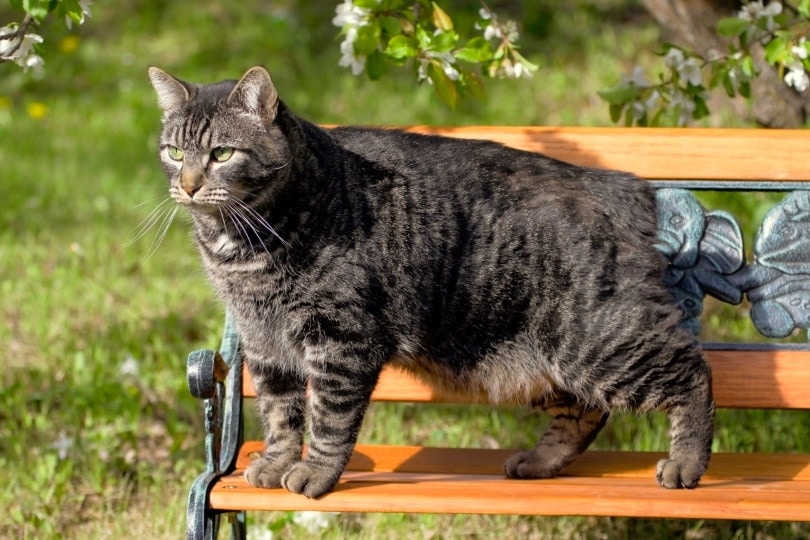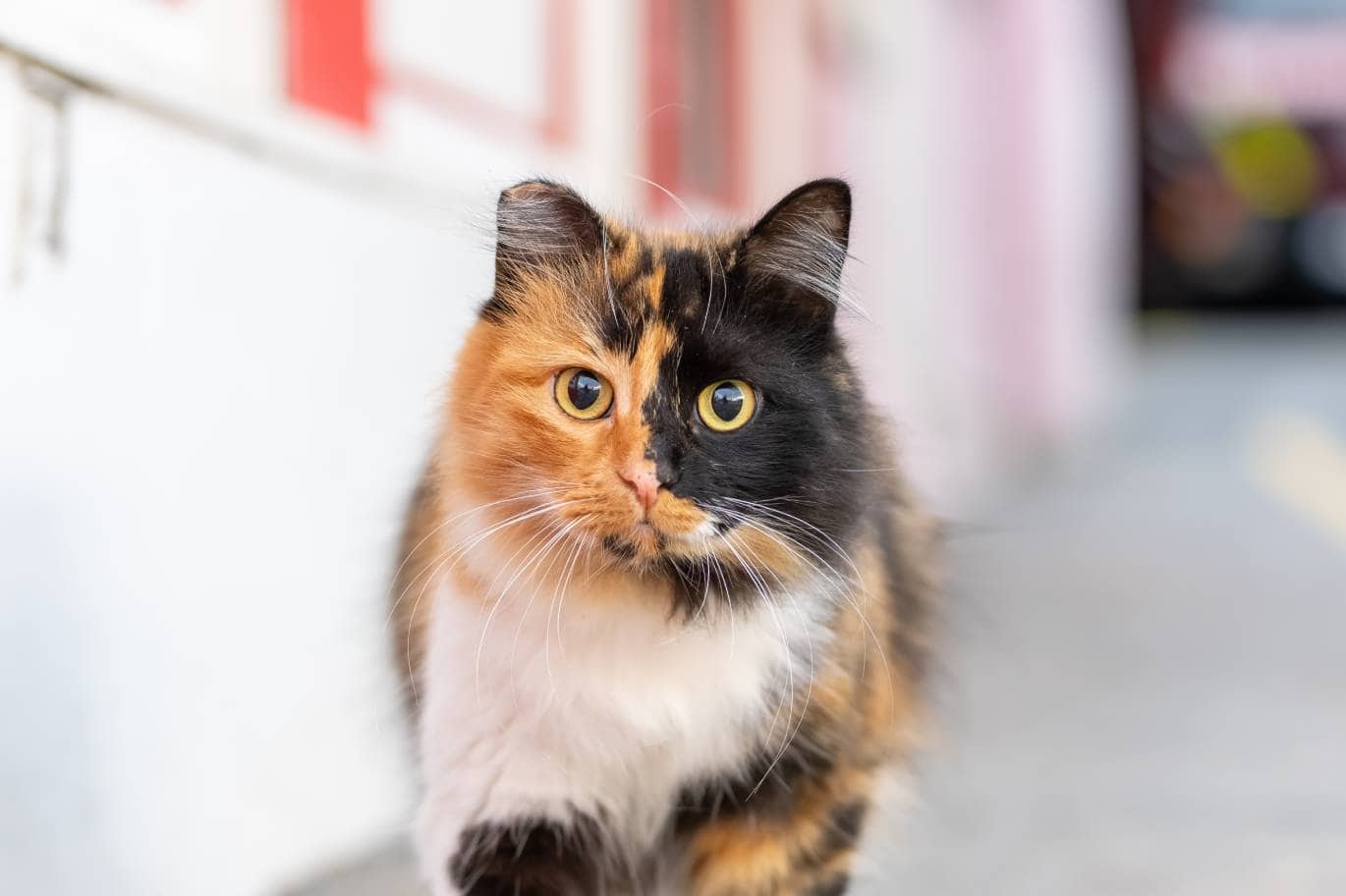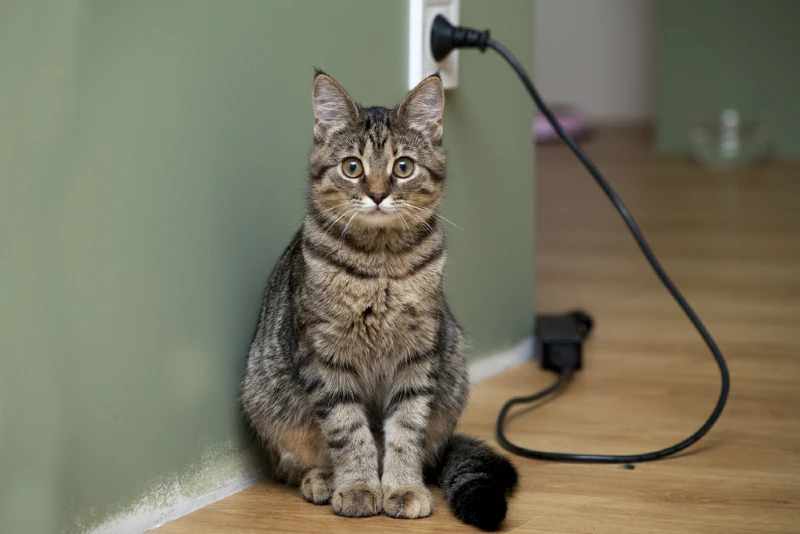Is Acrylic Paint Toxic to Cats? Vet-Approved Safety & Toxicity Facts
Updated on
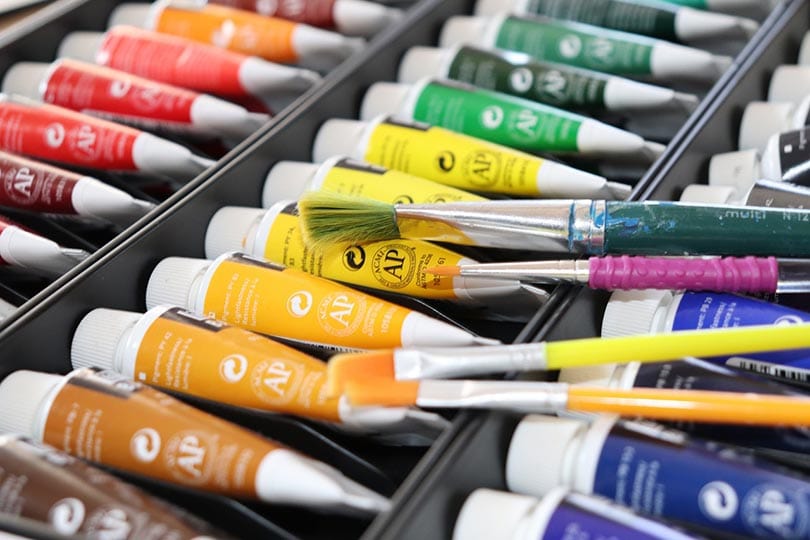
Click to Skip Ahead
We usually don’t think of cats getting into things they shouldn’t despite their natural curiosity. After all, up to 80% of accidental poisonings usually involve dogs instead. Nevertheless, it behooves all pet owners to understand the hazards of household items, including acrylic paint. An adult cat might give it a pass, especially if it has an odd smell. A kitten is another story. After all, anything can be a potential toy.
Acrylic paint can be non-toxic if it’s a child-safe product. However, it can be highly poisonous if it’s professional artist-quality supplies. We must also consider interior coatings that may contain acrylate polymer solutions. The bottom line is that none are outright safe for cats, with the problematic issues varying between the products.
Acrylic Paint 101
Dr. Otto Röhm invented acrylic resin in the early 1900s, initially as a material for car windows and safety glasses. He and his colleague Otto Haas later developed it into a dispersion that would become the basis of synthetic paint, providing an alternative to oil-based products. The main benefit of acrylic paint is its relatively fast drying when compared to oil-based products.
These paints have an acrylic polymer binder in an emulsion. These products are water-based and contain other additives, such as preservatives and, of course, pigments. The latter presents another issue with professional artist-grade paints. Some are ingredients that are toxic or carcinogens, like cadmium and cobalt. Manufacturers must label products that have them with this caution.
You will also find non-toxic versions of acrylic paints for children to use. Some manufacturers are making artist-quality products similarly. We mentioned their quick drying times. As it occurs, the additives within the paints evaporate. Of course, producers have proprietary formulas. However, some you may see include ammonia and propylene glycol. That raises another issue, particularly for cats.
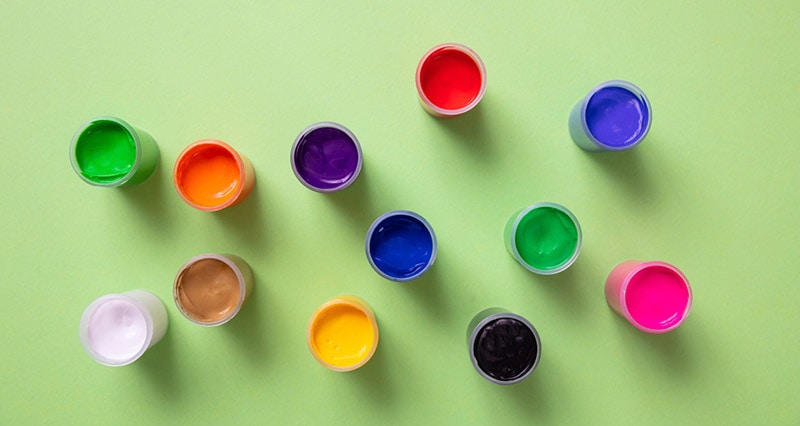
Propylene Glycol
This chemical is a type of alcohol or polyol that is odorless and colorless. It is derived from a petroleum derivative called propylene oxide, a hygroscopic compound. That means it absorbs moisture and can prevent mold and caking. French chemist Charles-Adolphe Wurtz developed the chemical in 1859. It’s something you undoubtedly encounter daily. Manufacturers use it in a broad spectrum of products, from shampoos to baked goods to seasonings. However, just because we eat it doesn’t necessarily mean it’s all right for our pets.
Propylene glycol is different. It is considered GRAS or generally recognized as safe by the FDA. That applies to humans and dogs. Cats are quite sensitive to it. It’s a strike against acrylic paints.
Accidental ingestion can cause the formation of what veterinarians call Heinz bodies. The result is the death of oxygen-carrying red blood cells with potentially fatal consequences.
A Word About House Paints
Even though we refer to them as latex, house paints are also water-based acrylic paints like the ones you use to paint pictures. Of course, the formulas vary with this application. Nevertheless, many products don’t have an EPA hazard classification. LD50, or a lethal dosage that would kill 50% of species given a substance, isn’t available.
That doesn’t mean house paints aren’t problematic. They can cause skin irritation. You should also make sure any rooms you paint are well-ventilated to prevent overexposure to other additives in the product. It is undoubtedly something you don’t want your cats walking through, either.
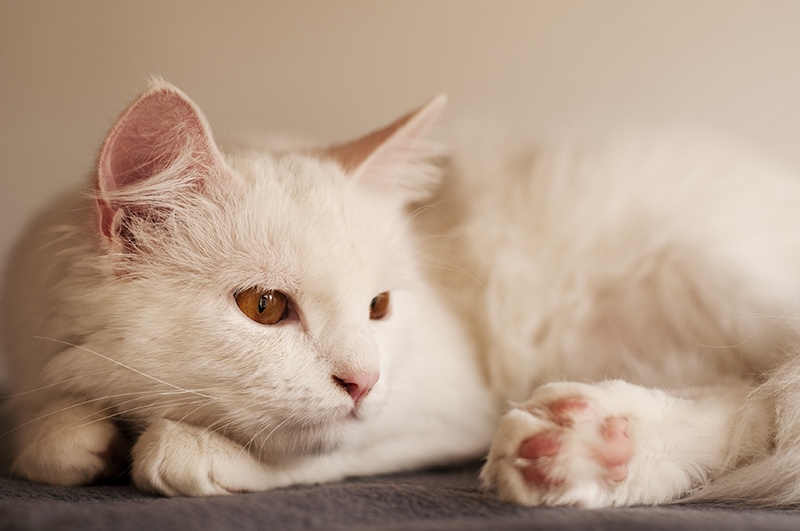
First Aid for Accidental Ingestion
We suggest contacting your vet immediately if your cat has walked through or ingested acrylic paint. These products are usually less harmful than other types, except for those with toxic pigments. Nonetheless, it’s essential to prevent your pet from licking it off their fur. If possible wash the paint off the skin or fur with plain water or a mild liquid soap. You may need your vet’s advice on removing the paint if it’s beginning to dry.
- Mouth and gum irritation
- Nausea and vomiting
- GI distress
- Drooling
We strongly urge you to take the paint tube or can with you when you bring your cat to the clinic. Any information it can provide will help speed the treatment and recovery.
Final Thoughts
While acrylic paints aren’t as poisonous as oil-based products, they still pose health risks for your cat. We recommend keeping them out of reach of your pet and small children in your home. If you’re an artist, consider swapping out paints with toxic pigments for ones that are safe to use. It’ll give you peace of mind knowing there’s one less thing you have to worry about a curious kitty finding.
Featured Image Credit: k-e-k-u-l-é, Pixabay


